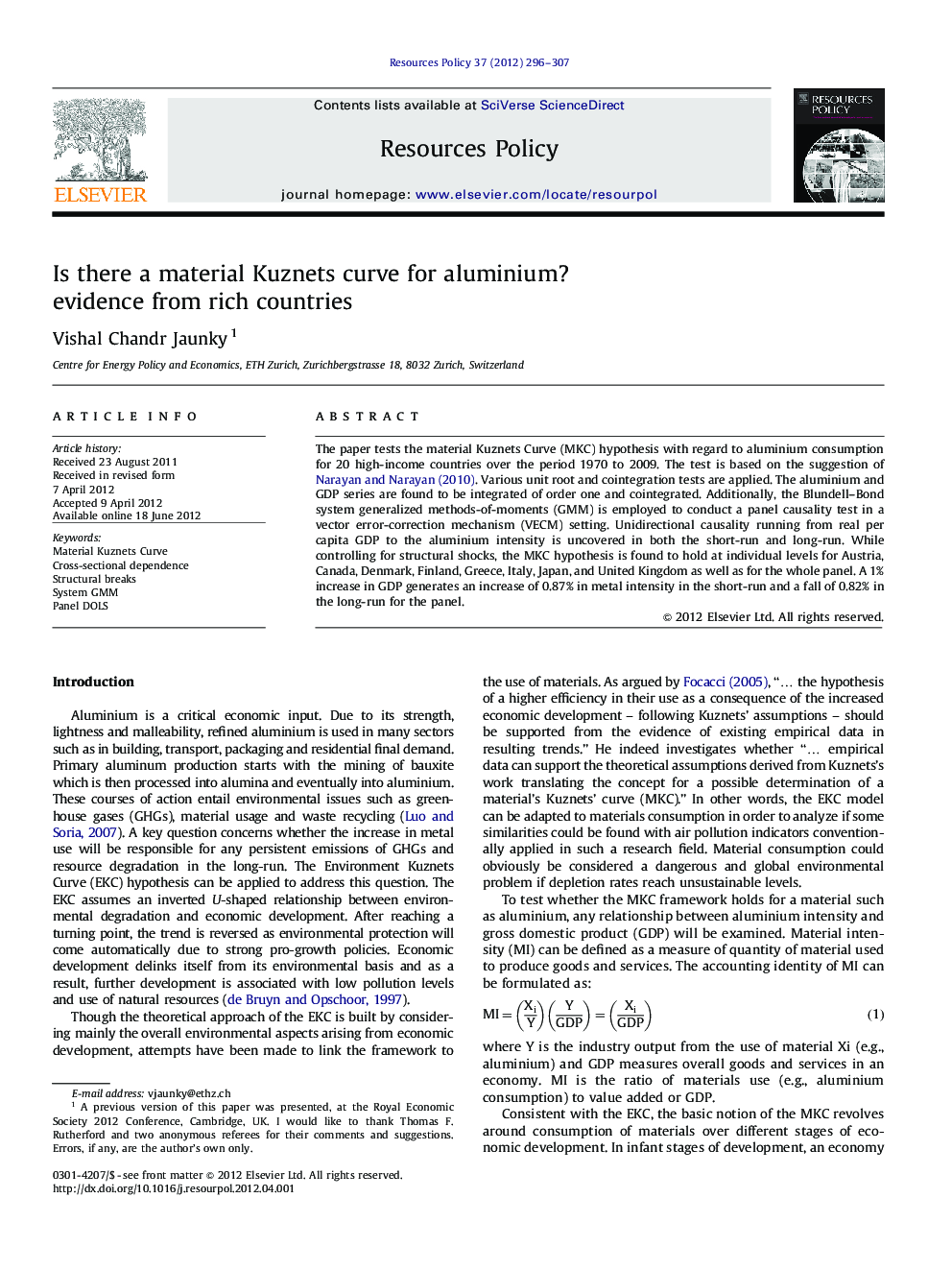| کد مقاله | کد نشریه | سال انتشار | مقاله انگلیسی | نسخه تمام متن |
|---|---|---|---|---|
| 986148 | 934778 | 2012 | 12 صفحه PDF | دانلود رایگان |

The paper tests the material Kuznets Curve (MKC) hypothesis with regard to aluminium consumption for 20 high-income countries over the period 1970 to 2009. The test is based on the suggestion of Narayan and Narayan (2010). Various unit root and cointegration tests are applied. The aluminium and GDP series are found to be integrated of order one and cointegrated. Additionally, the Blundell–Bond system generalized methods-of-moments (GMM) is employed to conduct a panel causality test in a vector error-correction mechanism (VECM) setting. Unidirectional causality running from real per capita GDP to the aluminium intensity is uncovered in both the short-run and long-run. While controlling for structural shocks, the MKC hypothesis is found to hold at individual levels for Austria, Canada, Denmark, Finland, Greece, Italy, Japan, and United Kingdom as well as for the whole panel. A 1% increase in GDP generates an increase of 0.87% in metal intensity in the short-run and a fall of 0.82% in the long-run for the panel.
► The material Kuznets Curve (MKC) hypothesis for rich countries is investigated.
► The Narayan and Narayan (2010) approach is used to study any U-shaped relationship.
► The MKC hypothesis is found to hold for 8 countries as well as for the whole panel.
Journal: Resources Policy - Volume 37, Issue 3, September 2012, Pages 296–307